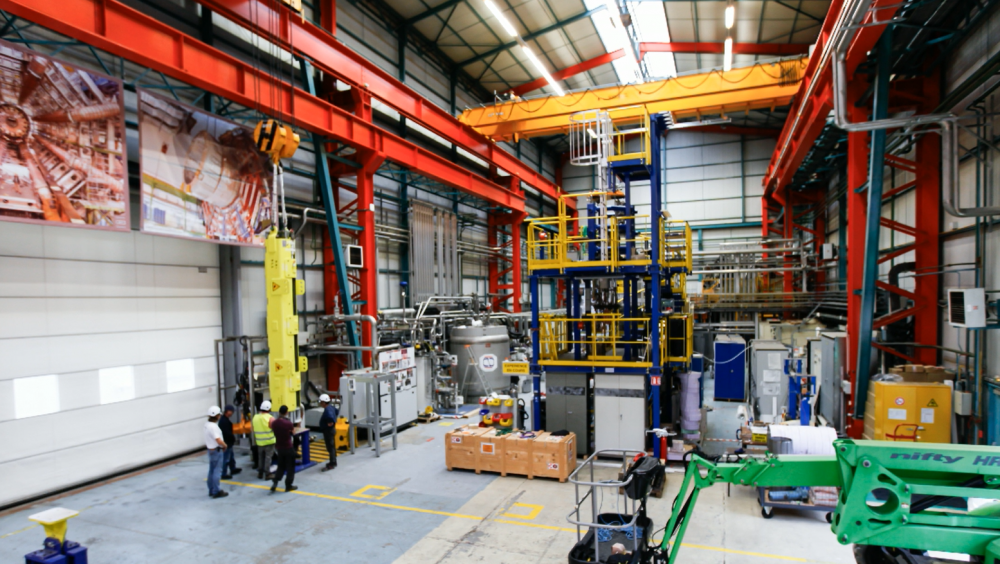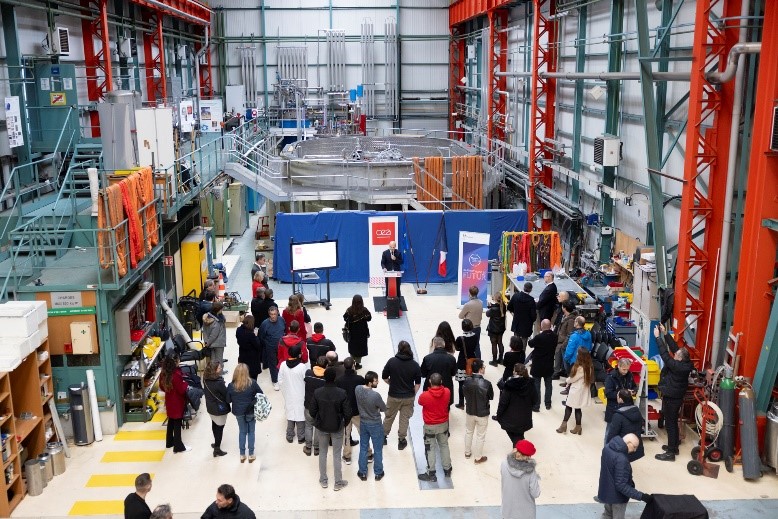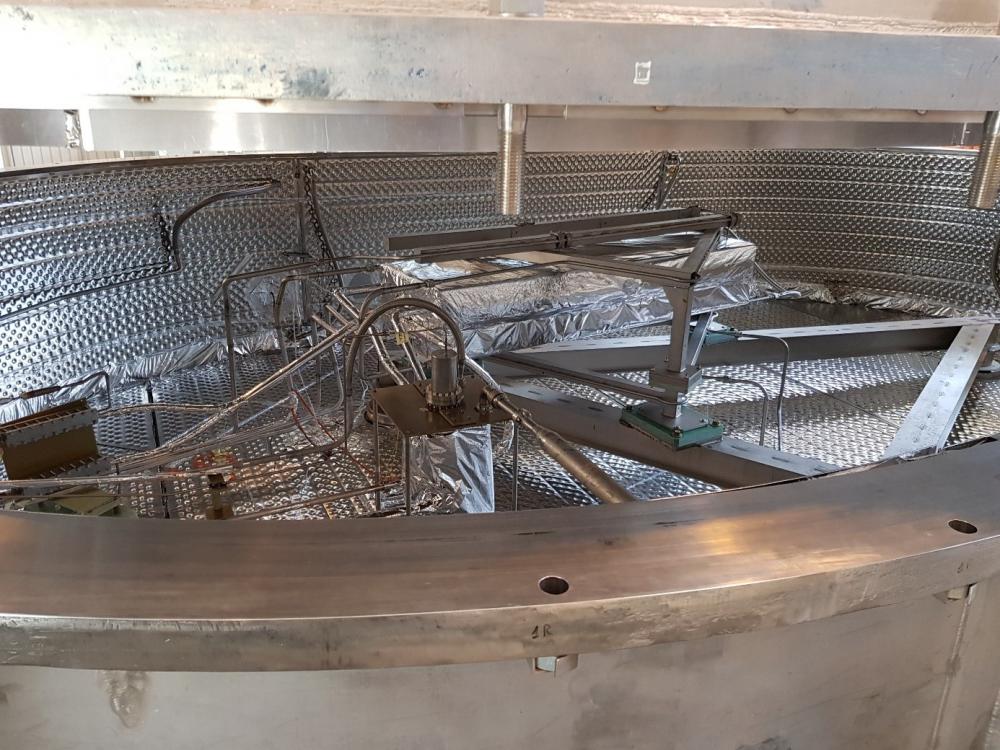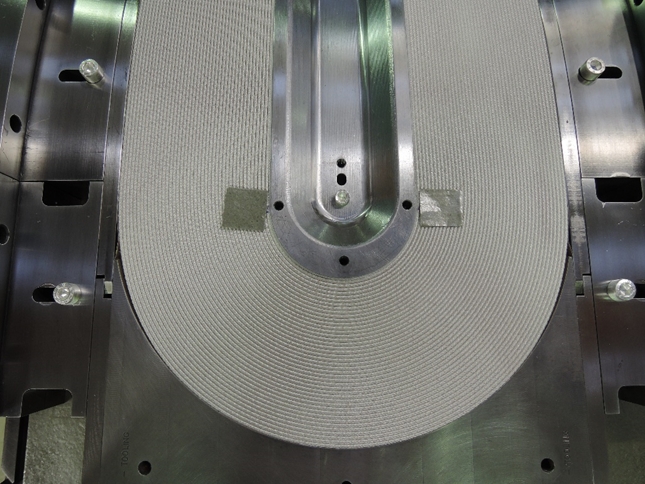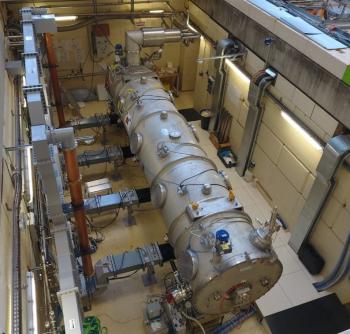Ten years of intense collaborative work between the DACM and DIS teams at IRFU culminated during the summer of 2024 in the successful testing of the MQYYM mock-up superconducting magnet in the new quadrupole accelerator magnet test station, STAARQ. These amazing results have validated 3 key areas of research and development that are closely interconnected between the two departments:
- Design and manufacture of a new NbTi (niobium-titanium) accelerator magnet for HL-LHC with the MQYYM magnet (DACM/LEAS and DIS/LCAP-LRI),
- Large scale cryogenics at 1.9 K with the development of the STAARQ cryogenic station (DACM/LCSE and DIS/LCAP-LRI),
- Superconducting magnet testing, with qualification of the magnet protection system based on a new digital Magnet Safety System (DIS/LEI).
This test was made possible thanks to the involvement of DIS/LDISC for the control system and DIS/LEIGE for the electrical engineering and power electronics.
The PEPR Suprafusion (Priority Equipment Programme for Exploratory Research), proposed by CEA and CNRS, is the winner of the third wave of calls for projects under the France 2030 plan. The €50 million funding will enable the development of high-temperature superconductors to meet tomorrow's energy and societal challenges, particularly with applications in the field of fusion. The programme is based on 3 axes: the development of the technological building blocks of HTS (high-temperature superconductors), the large-scale demonstration of technological feasibility and the exploration of breakthrough applications.
The MADMAX project, which was launched in November 2016, is led by the Max Planck Institut für Physik in collaboration with several European institutes. The goal of the project is the discovery of axions with a mass of about 100 µeV, potential candidates for dark matter. To detect these axions, it is necessary to develop a specific detector consisting of an electromagnetic signal amplifier and a magnet proportional to the size of the amplifier and delivering a strong magnetic field. In order to validate the innovations in the fabrication of the magnet conductor, its cooling concept and the quench detection, a demonstrator has been designed, fabricated, integrated and tested between March 2020 and August 2021. It is named MACQU for MADMAX Coil for Quench Understanding. The entire design, from the conductor to the support structure, including the MACQU magnet, its thermal shield and the busbars, was carried out at the CEA. The demonstrator, manufactured by the industrial Bilfinger Noell GmbH, arrived in March 2021 and was successfully tested between May 18 and August 27, 2021. The analysis of the data now completed provides the desired answers and opens up unexpected new avenues of work. The feasibility of the cable concept, its cooling as well as the quench detection for the MADMAX magnet was demonstrated during these tests.
On October 28, 2014, CEA signed a contract with the Israeli research center in Soreq (SNRC) for the construction of a accelerator called SARAF (SOREQ Applied Research Accelerator Facility) by IRFU teams. This agreement is materialized by preliminary and detailed study phases over a period of 18 months (2015 and 2016) opening up to a construction, testing and installation phase on the site that will last 6 years.
The aim is to build a superconducting linear accelerator capable of providing proton and deuteron beams of variable energy between 5 and 40 MeV with an intensity of up to 5mA. This facility is intended for fundamental and applied research in many fields.
The schedule, associated with this project, includes successively the delivery and installation on site and then the testing of three sub-assemblies:
- The medium energy line, MEBT (in 2020),
- The first cryomodule (in 2021),
- The three remaining cryomodules (in 2022
After winding, the seventh and last coil of FRESCA2 left Saclay in June 2019 in its reaction mould, putting an end to Irfu's activity on this project, which began in 2009 in collaboration with CERN. This type 3-4 coil is a spare coil, which, after reaction, instrumentation and impregnation at CERN, will join its type 1-2 sister on CERN shelves.
In a first step, the FRESCA2 dipole, a 100 mm Nb3Sn dipole magnet tested at CERN, had reached a field of 13.3 T (see highlight of 20/09/2017). A new series of tests in April 2018, after modifying the mechanical preloading of the magnet, allowed the FRESCA2 dipole to reach 14.6 T at a temperature of 1.9 K, representing a new field record for a dipole of this aperture. During these tests, the stability of its operation was validated at 14.4 T at 1.9 K, and at 13.6 T at 4.5 K respectively. The dipole has been qualified: it will now be able to be used as a test station to accommodate, in particular, tests of small magnets made from high temperature superconductors.
After more than 5 years of development, including 6 months of integration work of the 12,000 separate components to a complete cryomodule, the CEA-Irfu has just validated the technology of this complex system that reached the nominal ESS accelerating field in the 4 superconducting accelerating cavities.
At the limits of technology, this is the first time that such an intense accelerating field, maintained over such long pulse durations and with such high RF power, has been measured in superconducting cavities installed in a complete cryomodule.
This key step makes it possible to start the production phase of the 30 cryomodules that France is to deliver to the ESS research infrastructure, which will be operational in Sweden in 2023. This serial integration will begin in January 2019 under the supervision of Irfu with the contribution of the company B&S France and should be completed in 2022.

